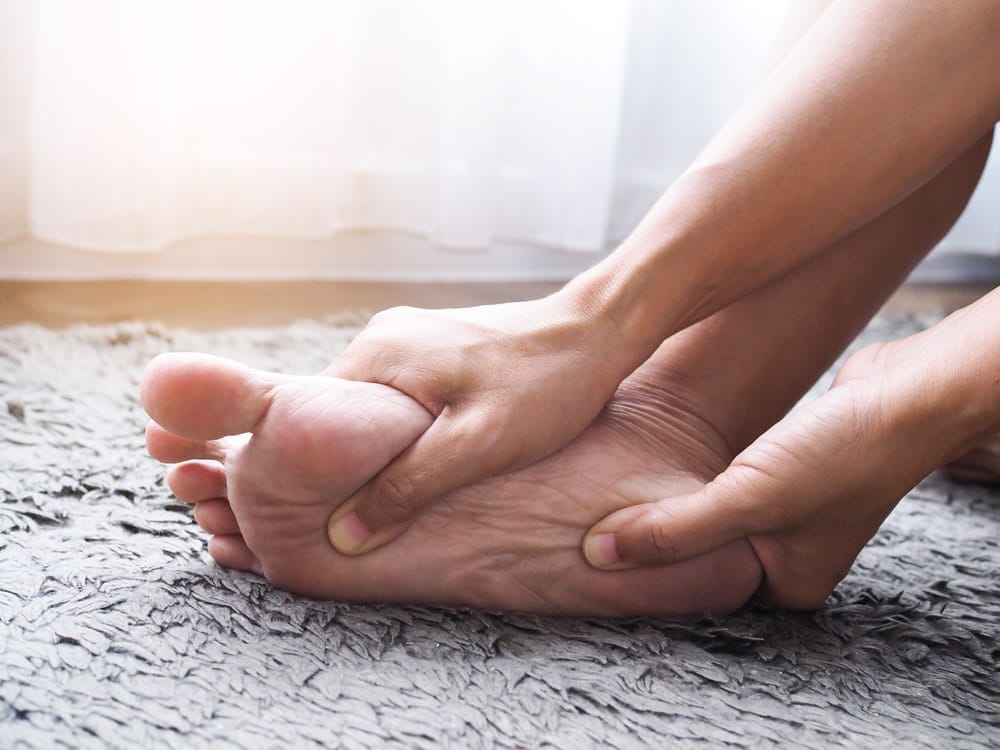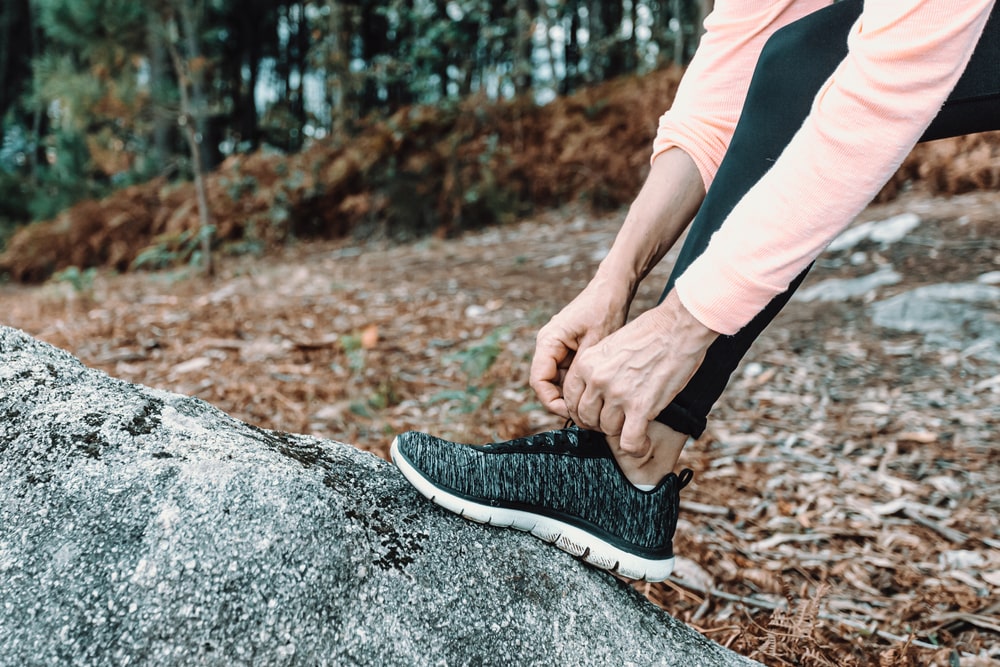With the average adult taking 4,000 to 6,000 steps per day, it is no wonder that seventy-five percent of Americans will experience foot problems in their lifetime. When the pain slowly creeps in, the first question for many is, “What is causing my foot pain?” There are a wide range of contributing factors to foot pain that span from injuries, viruses, infections, arthritis, overuse, sports and activities and poorly fitting footwear.
Studies suggest that on average, 1 in 4 people experience frequent foot pain in midlife, which is why it is important for adults, in particular, to understand the causes of their foot pain and when it is time to visit a foot specialist for relief. Seeking expertise from foot specialists is especially important since foot pain and discomfort can worsen or continue to linger if left untreated. It is recommended that even adults with healthy feet visit a foot specialist in order to prevent foot, toe, or nail problems. Toe and toenail problems alone impact between 60 and 75 percent of older individuals.
Pain from Foot Injuries, Viruses and Infections
The human foot is made up of 26 bones, 33 joints, 107 ligaments, 19 muscles, and tendons, which can all be prone to injuries, viruses and infections. In addition, humans have nearly 8,000 nerves in their feet. Broken bones, flat feet, diabetic neuropathy, osteomyelitis, and plantar warts are all sources of foot pain as a result of injury, virus, or infection.
Broken toes are among the most common of injuries and can increase the risk of infection or osteoarthritis in the toe in the future.
Twenty-five percent of Americans have flat feet, caused by injuries, obesity, or arthritis, and experience foot pain in the heel or arch area that worsens with activity.
Diabetic neuropathy is a type of nerve damage that occurs if you have diabetes, most often damages nerves in the legs and feet, and causes pain and numbness in the feet.
Osteomyelitis is an infection that can reach a bone, including in the foot, by traveling through the bloodstream, spreading from nearby tissue, or in people with diabetes who have foot ulcers.
Plantar warts are small growths that usually appear on the heels or other weight-bearing areas of your feet and are caused by HPV.
Foot Pain from Arthritis

Arthritis is inflammation of one or more of your joints and is common in the small joints of the foot and ankle. There are more than 100 forms of arthritis, many which affect the foot and ankle. The various types of arthritis that can cause foot pain include osteoarthritis, gout, septic arthritis, reactive arthritis, rheumatoid arthritis, and psoriatic arthritis. All types can make it difficult to walk and perform activities.
Osteoarthritis is the most common form of arthritis, affecting millions of people worldwide, and overtime can lead to the development of bone spurs anywhere on your feet. Bone spurs are bony projections that develop along bone edges that can cause joint pain and loss of motion.
Gout is a common and complex form of arthritis that is characterized by sudden and severe pain, swelling, redness and tenderness in one or more joints, most often in the big toe.
Septic arthritis is a painful infection in a joint that is caused by bacterial, viral or fungal infections.
Reactive arthritis is joint pain and swelling triggered by an infection in another part of the body, most often the intestines, genitals or urinary tract, while rheumatoid arthritis is a chronic inflammatory disorder that can also affect foot joints in a painful way.
Lastly, psoriatic arthritis can cause pain at the points where tendons and ligaments attach to your bones in the foot, especially at the back of your heel or in the sole of your foot.
Foot Pain from Overuse Injuries
Most injuries related to walking, running, and athletic activities are referred to as overuse injuries. They start gradually and worsen or persist over time. If left untreated, these injuries can progress to an acute injury that results in a long recovery period. These types of injuries include Achilles tendon ruptures, Achilles tendinitis, stress fractures, metatarsalgia, and plantar fasciitis.
Achilles tendon ruptures mainly occur in adults who play recreational sports and is an injury that affects the back of your lower leg. If you overstretch your Achilles tendon, it can tear completely or partially. Achilles tendinitis most commonly occurs in runners, who have increased the intensity or duration of their runs at a sudden rate, and middle-aged people who play sports such as tennis and basketball.
Stress fractures are tiny cracks in a bone, most common in the weight-bearing bones of the lower leg and foot, that are caused by repetitive force and overuse from jumping, running long distances and doing too much in new exercise programs.
Metatarsalgia is a condition in which the ball of your foot becomes painful and inflamed, and usually develops if you participate in activities that involve running and jumping.
Lastly, plantar fasciitis is one of the most common causes of heel pain and is caused by overuse, types of walking surfaces, foot structure, and types of shoes.
Pain from Poorly Fitting Footwear

Poorly fitting footwear is a major cause for conditions and pain in the foot. Nine out of 10 women wear shoes that are too small for their feet, so it isn’t a coincidence they have about four times as many foot problems as men. Wearing tight, narrow shoes can cause or worsen bunions, ingrown toenails, corns, calluses, and Morton’s neuroma.
Bunions are bony bumps that form on the joints at the base of your big toes and can cause ongoing big toe or foot pain. Ingrown toenails are a common condition in which the corner or side of the toenail grows into the soft flesh which then can cause pain, inflamed skin, swelling and an infection.
Corns and calluses are caused by friction and pressure from repeated action from tight shoes and high heels that squeeze areas of the feet. Loose shoes and not wearing socks can also cause friction on your feet.
Lastly, Morton’s neuroma is a painful condition that affects the ball of the foot and its development has been linked to wearing high-heels and tight shoes.
See the Foot Specialist at OrthoUnited
It is important to seek a foot specialist when experiencing foot pain or lingering discomfort, since it can worsen with time, limit your movement, and lead to permanent damage if not properly treated.
If you are experiencing foot pain, lingering discomfort, or are interested in expertise on foot pain prevention, we recommend that you prioritize your orthopaedic health and see our talented foot specialist, Dr. Travis Seaman. Request an appointment today!
